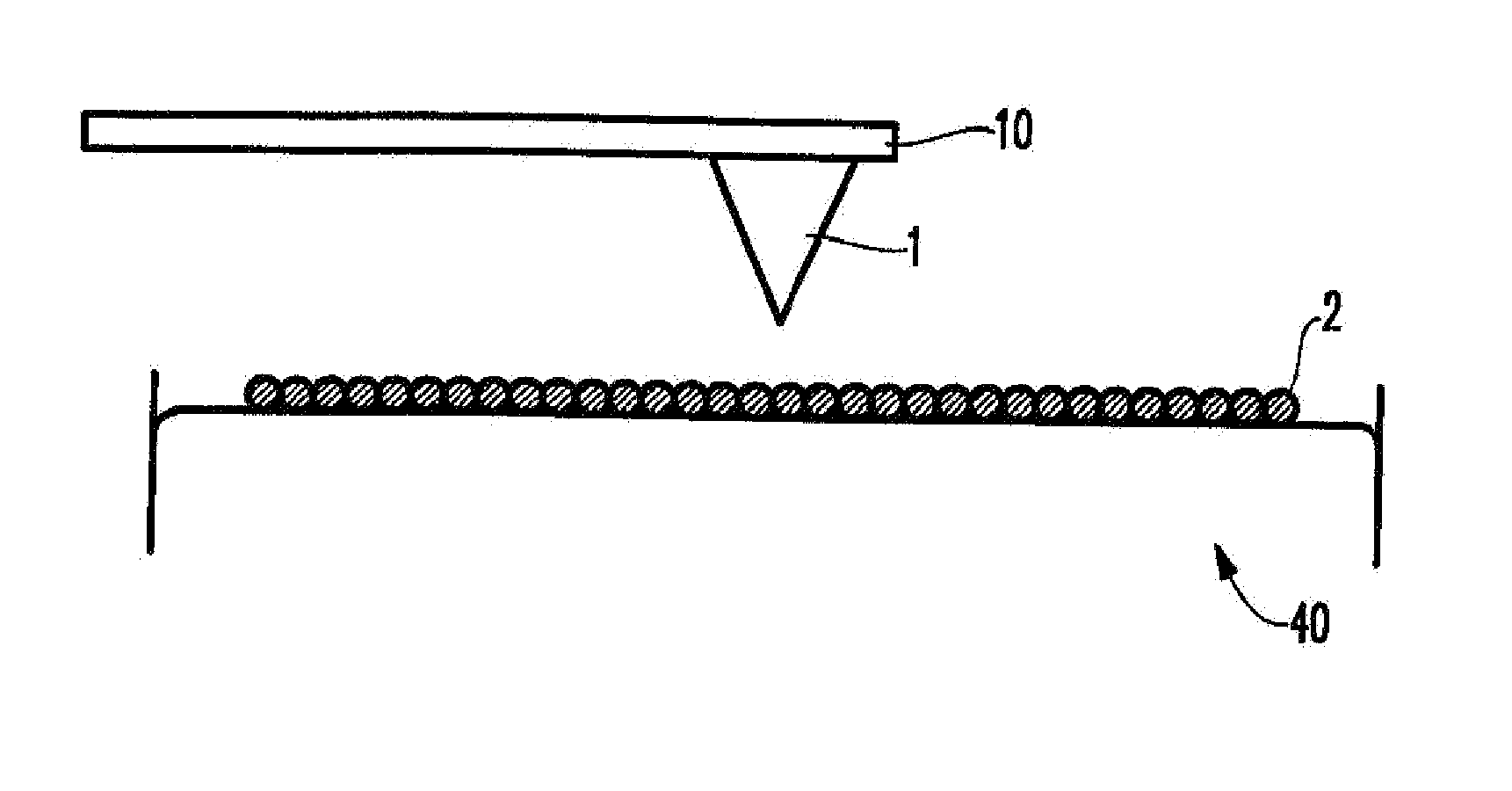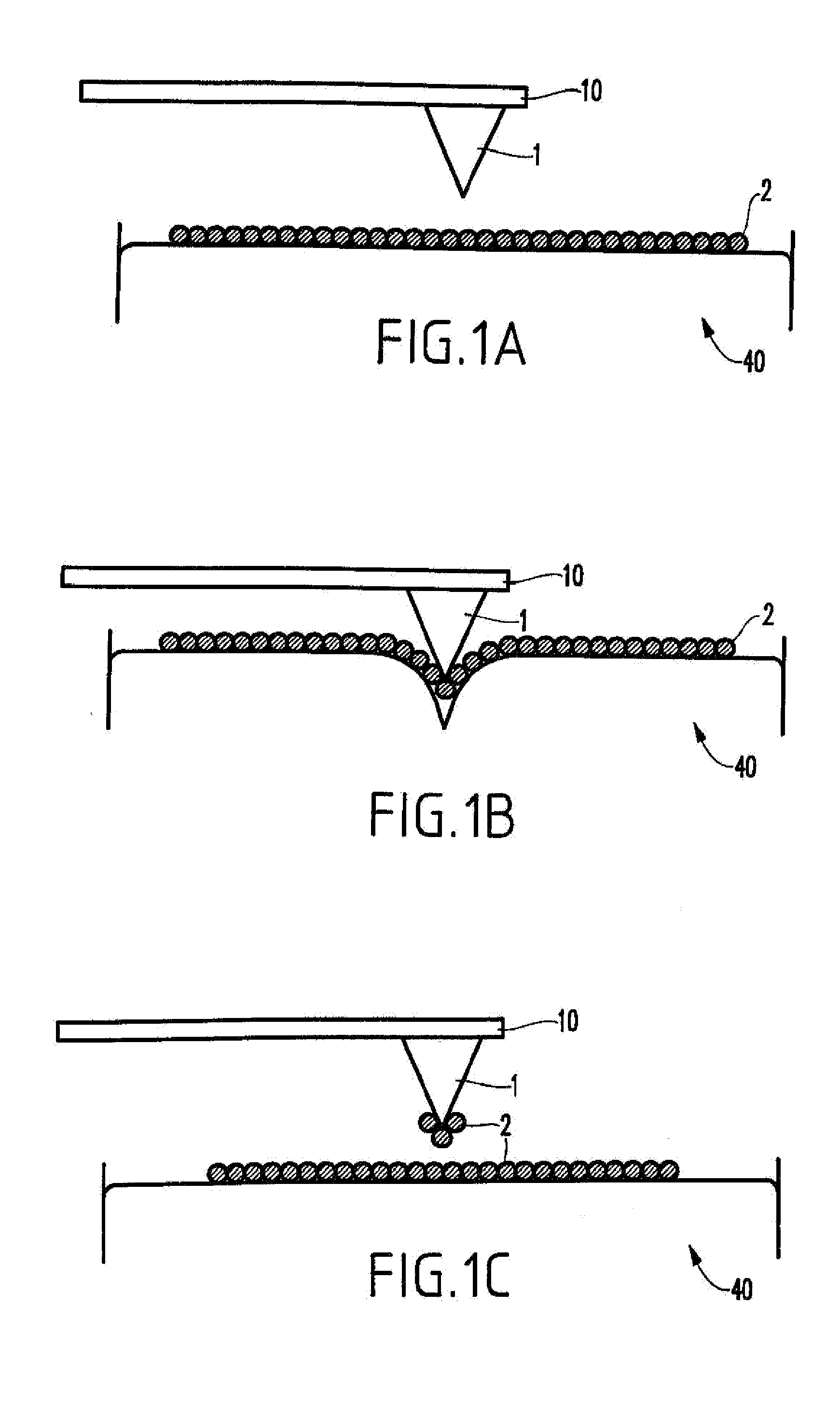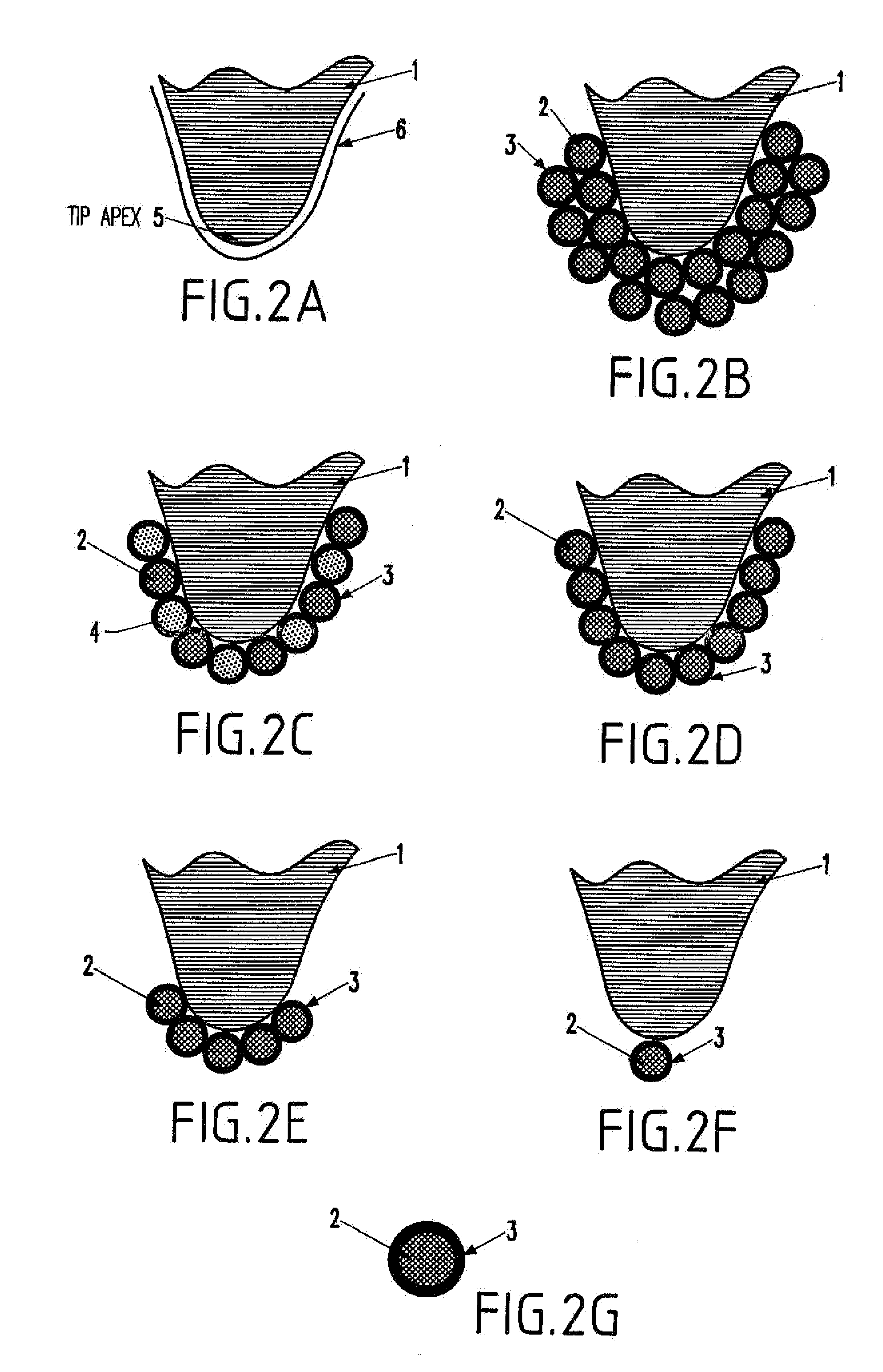Scanning probe microscopy tips composed of nanoparticles and methods to form same
a technology of nanoparticles and microscopy tips, which is applied in the direction of mechanical measurement arrangements, mechanical roughness/irregularity measurements, instruments, etc., can solve the problems of reducing resolution, limiting resolution, and limiting the spatial resolution of mfm sensors fabricated in this manner, so as to improve the spatial resolution of a magnetic force microscope (mfm) tip and strengthen the adhesion of nanoparticles
- Summary
- Abstract
- Description
- Claims
- Application Information
AI Technical Summary
Benefits of technology
Problems solved by technology
Method used
Image
Examples
Embodiment Construction
[0028] As mentioned above, there is a need for a scanning probe microscope with improved spatial resolution. In order to increase the spatial resolution, the invention forms the microscope probe tip using chemically synthesized nanoparticles. The advantage conferred by a tip coated with chemically synthesized nanoparticles is that the region on the tip that interacts with the substrate is limited to a few nanoparticles. For a tip coated with magnetic nanoparticles, this region is much smaller than the interaction-region on MFM tips fabricated by conventional processes. The smaller interaction-region leads to higher spatial resolution.
[0029] In a preferred embodiment of the present invention, the process of coating the tip is shown in sequence in FIGS. 1(a), 1(b), and 1(c). FIG. 1 is not drawn to scale; wherein nanoparticles have a typical diameter of 2 nm-20 nm; the tip apex has a typical diameter of 20 nm-50 nm; and the tip has a typical height of 10 μm-30 μm. A nonmagnetic silico...
PUM
| Property | Measurement | Unit |
|---|---|---|
| thickness | aaaaa | aaaaa |
| diameter | aaaaa | aaaaa |
| displacements | aaaaa | aaaaa |
Abstract
Description
Claims
Application Information
 Login to View More
Login to View More - R&D
- Intellectual Property
- Life Sciences
- Materials
- Tech Scout
- Unparalleled Data Quality
- Higher Quality Content
- 60% Fewer Hallucinations
Browse by: Latest US Patents, China's latest patents, Technical Efficacy Thesaurus, Application Domain, Technology Topic, Popular Technical Reports.
© 2025 PatSnap. All rights reserved.Legal|Privacy policy|Modern Slavery Act Transparency Statement|Sitemap|About US| Contact US: help@patsnap.com



